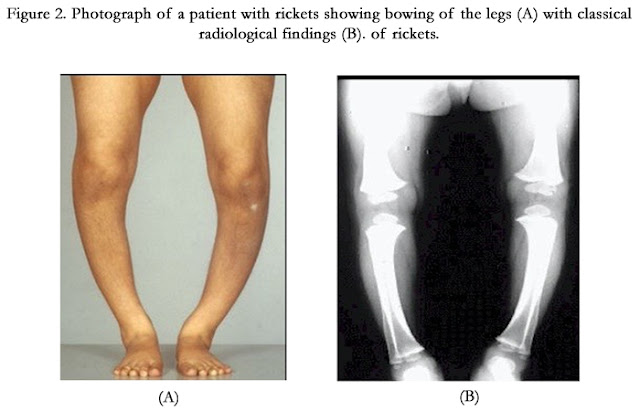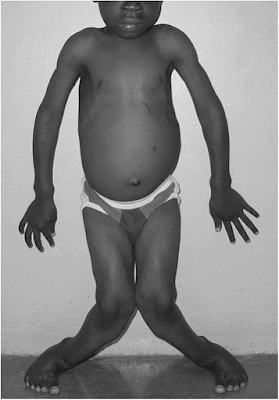Rickets is the softening and weakening of bones in children, usually because of an extreme and prolonged deficiency of vitamin D. Rare inherited problems also can cause this problem.
Vitamin D helps the child’s body absorb calcium and phosphorus from food. Insufficient amount of vitamin D make it difficult to maintain proper calcium and phosphorus level in bones so, this can cause rickets.

Adding vitamin D or calcium to the diet can correct the problem of rickets. When it is due to any other medical problem, the person may need additional medications or may be treatment as consulted by the doctor treatment. Some skeletal deformities can also be caused by rickets.
Risk factors for rickets
There are many risk factors for rickets. Major risk factors for this problem include the following:
- AgeIt is most common in children who are between 6 and 36 months old. During this period of their age, children experience rapid growth in their body. This is the time when their body need the most vitamin D, calcium and phosphate to strengthen and develop their bones.
- DietYou have a higher risk of developing rickets if you are taking diet that doesn’t include fish, eggs or milk. You are at an increased risk of getting this problem, if you cannot digesting milk easily or have an allergy to milk sugar (lactose). Infants who are only fed breast milk can fight this problem. Breast milk contain enough vitamin and protein to prevent this problem.
- Skin colorChildren of Africa and Middle Eastern countries have dark skin, so they are at the high risk of rickets. Dark skin does not react as strongly to sunlight as lighter skin does. Dark skin produces less vitamin D comparative to light skin.
- Geographic locationOur bodies produce more vitamin D when they’re exposed to sunshine, so you’re more at risk for this problem if you live in an area with little sunlight. You’re also at a higher risk if you work indoors during daylight hours.
- GenesOne form of rickets can be inherited. This means that the disorder is passed down through your genes. This type is called hereditary rickets, prevents your kidneys from absorbing phosphate.
Symptoms

Various signs and symptoms of rickets include:
- Delayed growth
- Delayed motor skills
- Pain in the spine, pelvis and legs.
- Muscle weakness.
- It softens the areas of growing tissue at the ends of a child’s bones (growth plates), it can cause skeletal deformities such as:
- Thickened wrists and ankles.
- Breastbone projection.
Treatment
Treatment for rickets focuses mainly on replacing the deficient vitamins and minerals in person’s body. This will eliminate most of the symptoms associated with it. Rickets can be treated by following ways:
- Increase exposure to sunlight: He /she should increase their exposure to sunlight.
- Diet: Encourage them to consume food products high in vitamin D, such as fish, liver, milk, and eggs.
- Supplements: Calcium and vitamin D supplements can also be used to treat rickets. Ask your doctor about the correct dosage, as it can vary based on the size of your child. Too much vitamin D or calcium is also dangerous for the body.
- Braces or surgery: If skeletal deformities are present, your child may need braces to position their bones correctly as they grow. In severe cases, your child may need corrective surgery.
- Special supplements for hereditary rickets: A combination of phosphate supplements and high levels of a special form of vitamin D are required to treat the disease.
